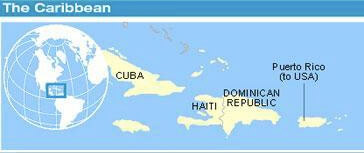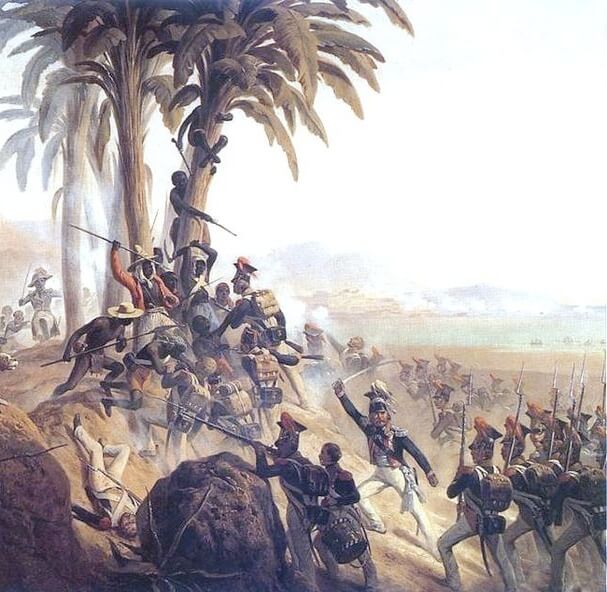Latino-Caribbean
The Caribbean islands were originally inhabited by the Taino and Caribs (which is where the name "Caribbean" comes from). The Spanish brought enslaved people from Africa. Caribbean music reflects this mixed heritage. African rhythms played on the batá drums, congas, and claves were mixed with Taino insruments, like the slit drums and maracas, and Spanish instruments, such as the Vihuela guitar, to create a unique hybrid music. This new music was not just entertainment: it helped create the sense of identity needed by people struggling to end slavery and begin independence for island colonies.
Polyrhythm is the simultaneous sounding of two or more independent rhythms. Traditional African music is known for its use of polyrhythms, especially the music of West Africa. Polyrhythms can also be found extensively in the music of the Latin-Caribbean. Further influence of African culture in Latin-Caribbean music can be seen through its use of call and response, a traditional African music technique often incorporated into polyrhythmic music. This technique uses different drum lines and other musical instruments, as well as dancing and voices. Some researchers believe that polyrhythmic music symbolizes the African tradition of egalitarian societies, in which many different voices are heard. Just as polyrhythmic music has simultaneous beat cycles of different scale, African architecture, sculpture, and other designs have similar geometric patterns at different scales known as fractals.
Although, as you will read, much of the music of Cuba, the Dominican Republic and Puerto Rico was influenced directly by the slave trade, music on the plantations themselves was a much different story. African rhythms and drumming are foundational to much of Latin music. However, plantation owners saw drumming as dangerous and forbid their slaves from using drums. Why do you think plantations owners saw drumming as dangerous?


